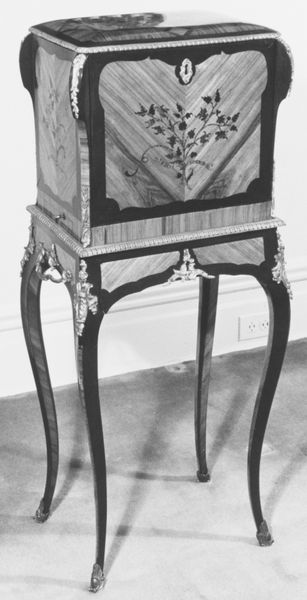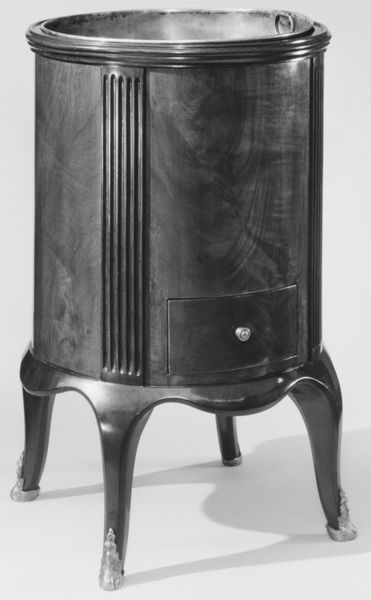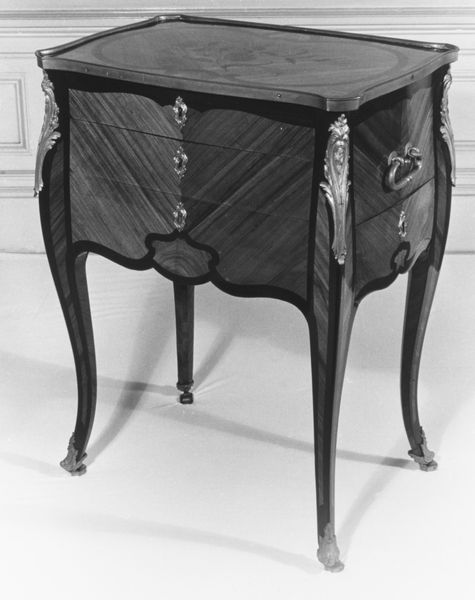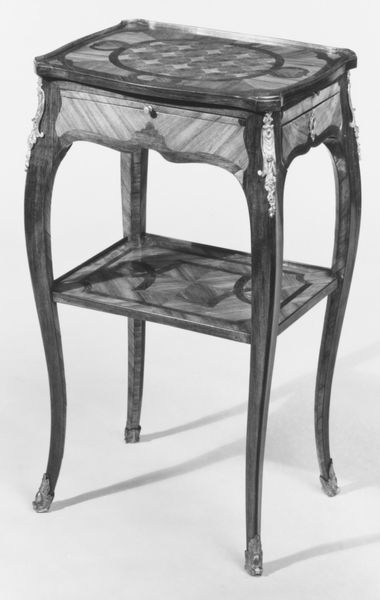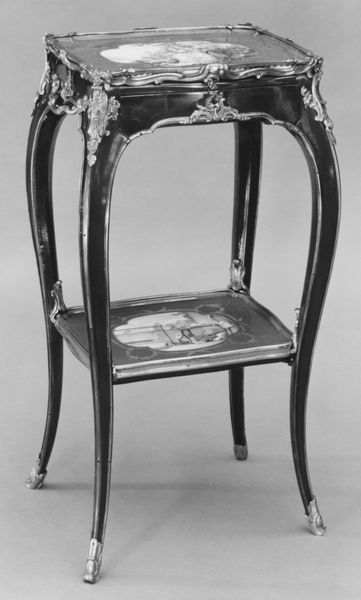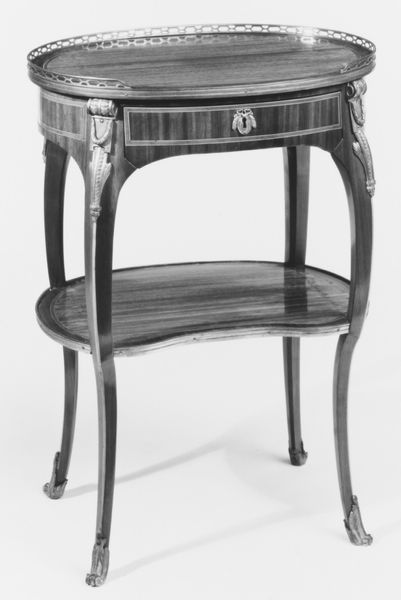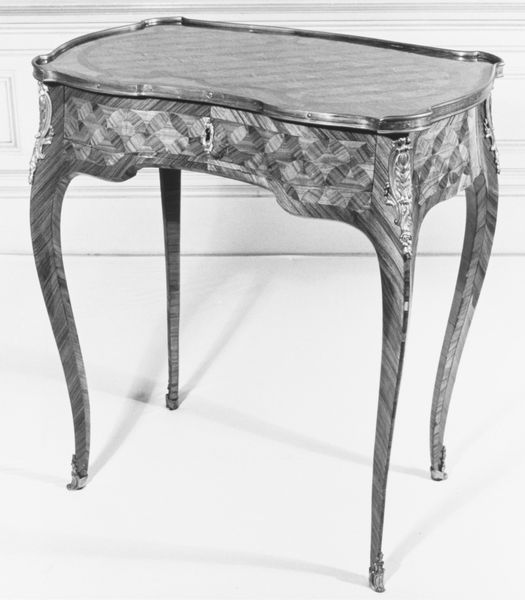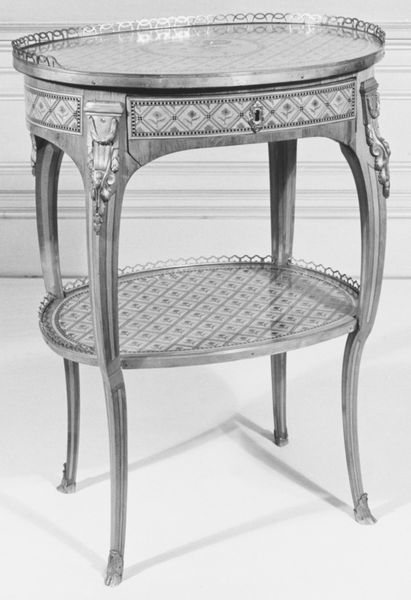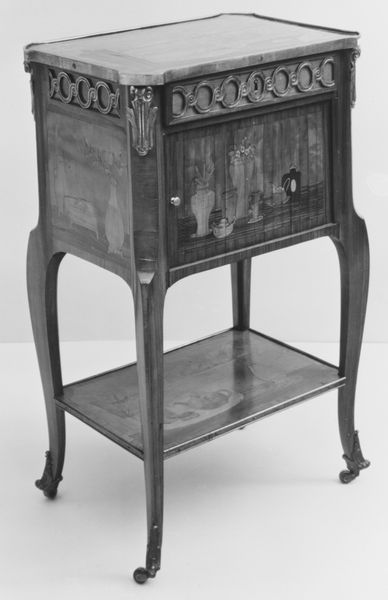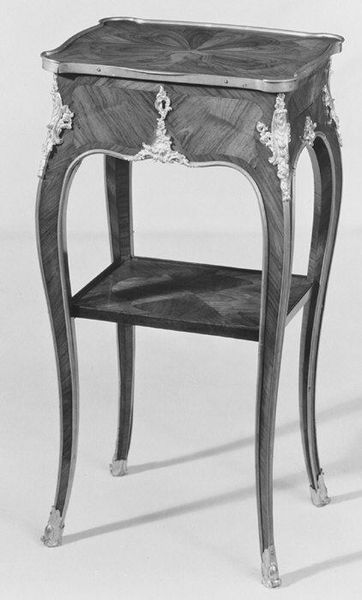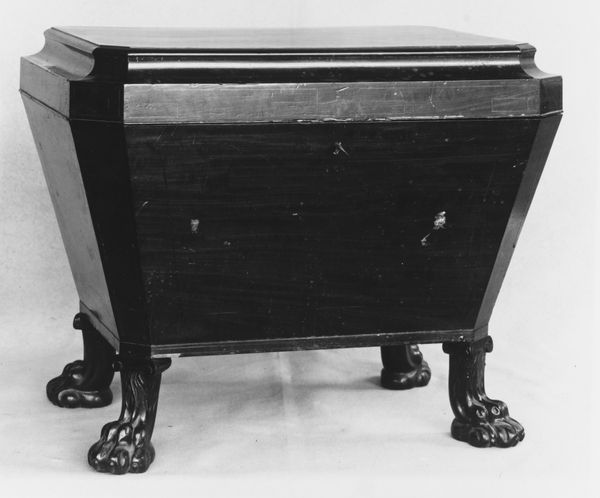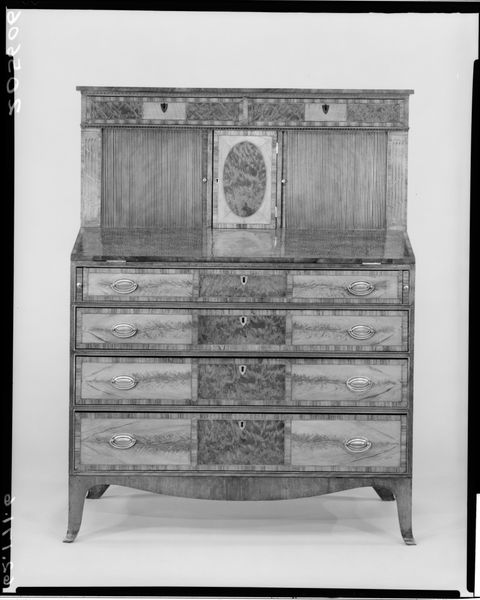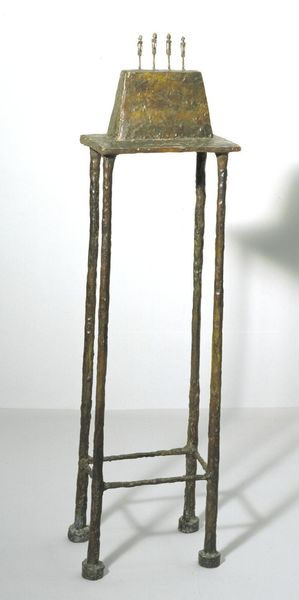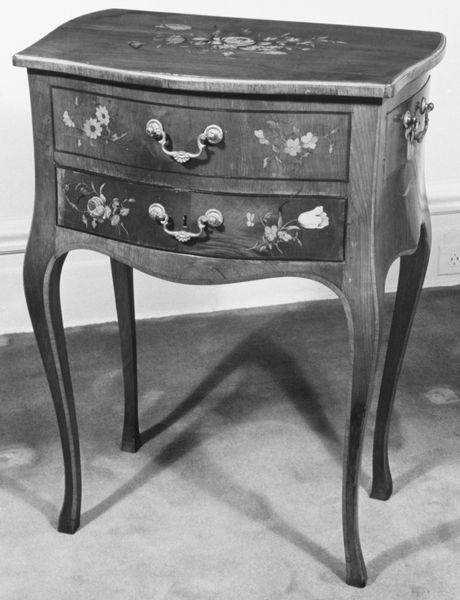
sculpture, wood
#
sculpture
#
furniture
#
sculpture
#
wood
#
decorative-art
#
rococo
Dimensions: Overall: 27 1/2 × 17 1/8 × 12 in. (69.9 × 43.5 × 30.5 cm)
Copyright: Public Domain
Curator: The object before us is a small rectangular table crafted by Johann Friedrich Spindler, sometime between 1760 and 1770. Editor: It’s an elegant piece, almost airy, with a delicate structure—the wood grain seems to flow across its surfaces like water. Curator: Indeed. Its intricate marquetry reflects the Rococo fascination with natural forms, while also subtly alluding to trade networks of the era. Think of the exotic woods used; they would have signaled privilege and a refined global awareness in elite social circles. The table's existence speaks to the material culture of the aristocracy and their intricate routines. Editor: Looking at the top, with its floral inlays, I am captivated by the details. Each bloom seems meticulously rendered, but more generally, it is the curving cabriole legs that hold the piece aloft, lending to it a grace I did not anticipate. There’s also something visually complex about how the patterns intersect at each plane change. Curator: This design and form were undoubtedly intertwined with performative gestures in boudoirs. The placement of items such as letters, cosmetics, or personal keepsakes on it reveals a narrative about the user’s habits and social standing. How might it also inform our modern understanding of accessibility, privacy and exclusion for people living during this time? Editor: Its materiality provides some grounding; I am struck by how tactile its appearance is, the visual effect of the wooden inlay is nothing short of luxurious. Curator: It invites a rethinking of our received knowledge and values surrounding craft—a recognition of the skillful labor, the colonial structures and power dynamics inherent in each element that might inform present practices. Editor: Absolutely, I now consider its inherent textures to contain layered nuances beyond simple aesthetics. Curator: Seeing how form, politics and craftsmanship meld makes this more than a simple artifact— it's a mirror reflecting societal complexities across centuries. Editor: True, there is so much complexity bound up inside that exquisite piece.
Comments
No comments
Be the first to comment and join the conversation on the ultimate creative platform.
